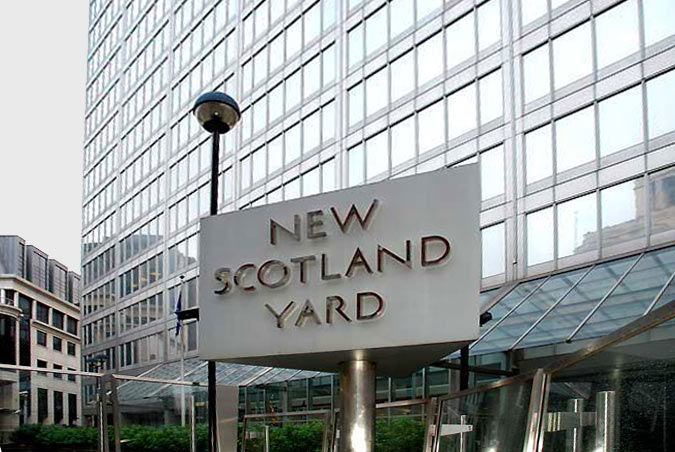

On July 19, 1993, Colin Ireland walked into his solicitor’s office at Southend-on-Sea and told him he had been with Emanuel Spiteri on the night the chef was murdered. Spiteri was the last of his victims; Ireland was prompted to make this admission after the police released CCTV footage of the two men at a London railway station.
By this time he had already been identified, and as he had generated considerable publicity for his handiwork, deliberately, it is likely that he would have given himself up at some point anyway.
He was charged with five counts of murder, pleaded guilty, and in December 1993 he was given the mandatory life sentence. He died of natural causes in Wakefield Prison on February 21 last year, aged 57.
Colin Ireland is said to have made a New Year’s resolution to become a serial killer, and achieved that ambition in a remarkably short span of time.
On the other side of the Atlantic in the State of Missouri, an even more dangerous and bizarre sadist claimed 12 victims before he was brought to book. Like Ireland, Maury Travis may have killed more; Ireland is believed to have claimed at least one other victim; Travis boasted he had murdered a total of 17.
Travis is also a case of life imitating art in the most horrific fashion. Back in the 1980s in a periodic media flap of righteous indignation, there arose the cult of the snuff film, a genre in which people, usually young women or sometimes children, were said to have been murdered for the sake of filming the act.
This belief was propagated by Mary Whitehouse, the bête noire of anti-censorship activist David Webb. Although deaths, including executions, had been filmed on occasion, eg the Kennedy assassination, snuff films turned out to be an urban legend. Maury Travis put the snuff in the film and took the legend out of it. Travis was black, and like most serial killers did not cross the racial divide. Also, he targeted the vulnerable; Ireland had murdered promiscuous homosexuals; Travis picked up prostitutes, took them home and tortured them to death, filming the process. Also like Ireland, Travis was not content simply to murder but wanted recognition, or at least to taunt his pursuers, and it was this that led to his downfall. Travis mailed a map to the body of one his victims to a newspaper, which naturally passed it on to the police. Careful investigation showed it to have been printed out from the website of the travel company Expedia Dot Com. A combination of legal process and on-line tracking was able to reveal the ip address from which the map was printed: 65.227.106.78.
This led to the authorities paying a call on the computer user, and Maury Travis made history by becoming the first serial killer to be tracked by his own Internet footprint.
He would never stand trial for his crimes; he hanged himself in his cell on June 10, 2002.
A short documentary about the crimes of this sicko can be found on YouTube.
The third of these monsters trapped by the surveillance state is BTK Killer Dennis Rader. The letters stand for Bind, Torture, Kill. It would be difficult to find a more unlikely suspect for serial murder than Lutheran Church deacon and community activist Rader, but over a period of thirty years he murdered no fewer than ten people in Kansas. Unlike most serial killers who target women or children or men, Rader was totally undiscriminating; his first four victims were murdered on January 15, 1974, and were all members of one family: father, mother, son and daughter. His last victim was a 62 year old woman, on January 19, 1991.
While Maury Travis sent a letter to a newspaper to taunt the authorities, Rader went one better and then some. It was he himself who came up with the BTK appellation. When another suspect was arrested for his first outrage he wrote to the local newspaper claiming responsibility, describing the crime scene adding “Bind them”, “Torture them”, “Kill them”.
Rader was arrested after he sent the police a communication on a floppy disk, which contained metadata in a deleted file that led right back to his church.
Unfortunately, Rader was not eligible for the death penalty; he was sentenced in August 2005, and will never see daylight again.
As with Ireland and Travis, a documentary about Rader can be found on YouTube. Some of the details are shocking. The cases of Travis and Rader are exceptional; it remains to be seen if either of these men left deliberate subconscious clues as is believed of some murderers. Rader even reported one of his murders himself.
Although they attract a lot of attention, serial killers are fortunately rare, but the intensive surveillance to which our societies are increasingly being subjected, both state and private, has as stated a definite up side. CCTV footage is regularly used to bring offenders to justice, and even to keep our masters in line. The classic example of this is probably the case of Ian Tomlinson. The police tried desperately to cover up the death of this innocent bystander due to the thuggish behaviour of one of their own, including fixing not one but two post mortem examinations. If the incident had not been caught on someone’s mobile phone, they would have succeeded in covering it up completely.
There are of course serious concerns about privacy, but if CCTV, hidden cameras, phone taps and other, more subtle forms of surveillance – like smart water – discourage crime, prevent it, and even bring serial killers to book, most people would consider the trade-off worthwhile.
[The above op-ed was first published August 19, 2013. If like me you have a penchant for gallows humour, check out page 7 of this fine anthology.]
Back To Digital Journal Index